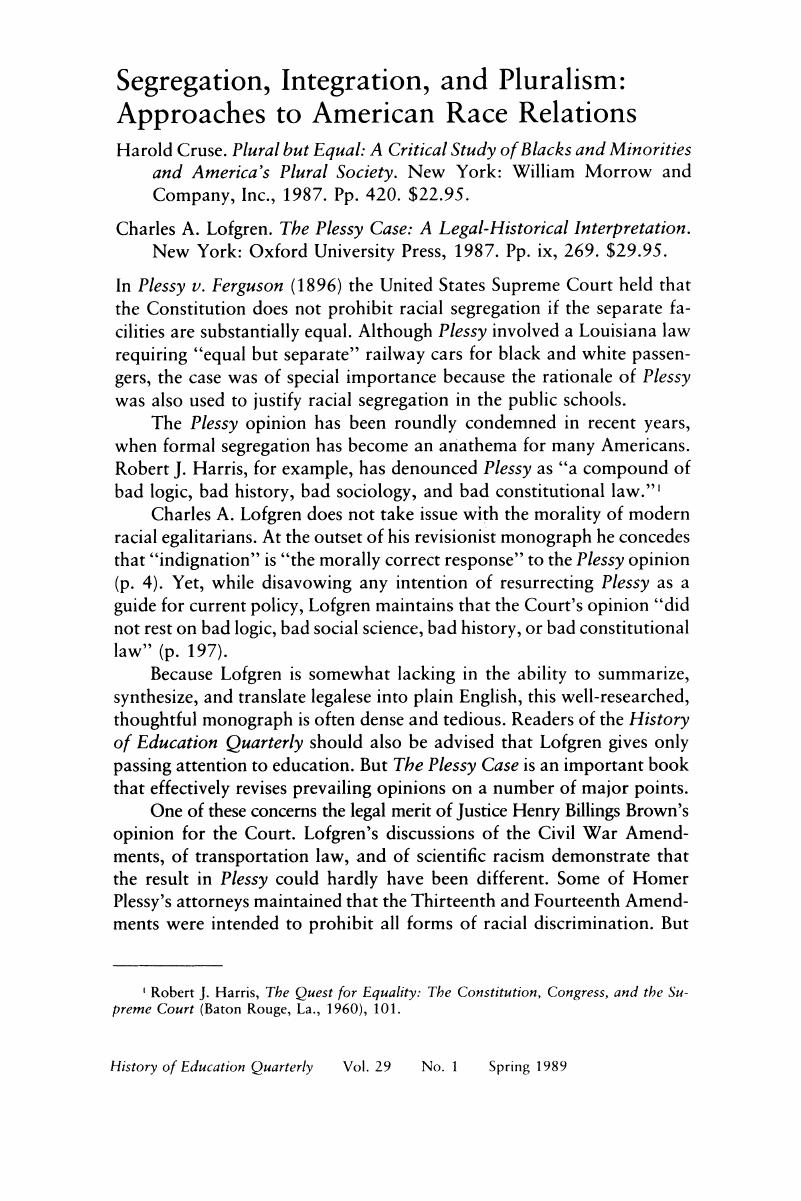No CrossRef data available.
Published online by Cambridge University Press: 24 February 2017

1 Harris, Robert J., The Quest for Equality: The Constitution, Congress, and the Supreme Court (Baton Rouge, La., 1960), 101.Google Scholar
2 Tushnet, Mark V., The NAACP's Legal Strategy against Segregated Education, 1925–1950 (Chapel Hill, N.C., 1987), xii.Google Scholar
3 Ibid.Google Scholar
4 Du Bois, W. E. B., “Segregation,“ Crisis 41 (Jan. 1934): 20.Google Scholar
5 Ibid.Google Scholar
6 Du Bois, W. E. B., “Criteria of Negro Art,“ Crisis 32 (Oct. 1926): 290.Google Scholar
7 Du Bois, W. E. B., “The Conservation of Races,“ American Negro Academy, Occasional Papers No. 2 (1897), reprinted in W. E. B. Du Bois: Writings, ed. Huggins, Nathan (New York, 1986), 825.Google Scholar
8 Ibid., 820.Google Scholar
9 Du Bois, W. E. B., “The New Negro Alliance,“ Crisis 41 (June 1934): 183.Google Scholar
10 Du Bois, W. E. B., “The Board of Directors on Segregation,“ Crisis 41 (May 1934): 149.Google Scholar
11 Du Bois, W. E. B.: Writings, 824.Google Scholar
12 Hill, Herbert, review of Plural but Equal, Los Angeles Times Book Review, 24 May 1987, p. 3.Google Scholar
13 For more on noneconomic liberalism, see Joyce Ross, B., J. E. Spingarn and the Rise of the NAACP, 1911–1939 (New York, 1972), 13–14.Google Scholar
14 W. E. B. Du Bois: Writings, 825.Google Scholar